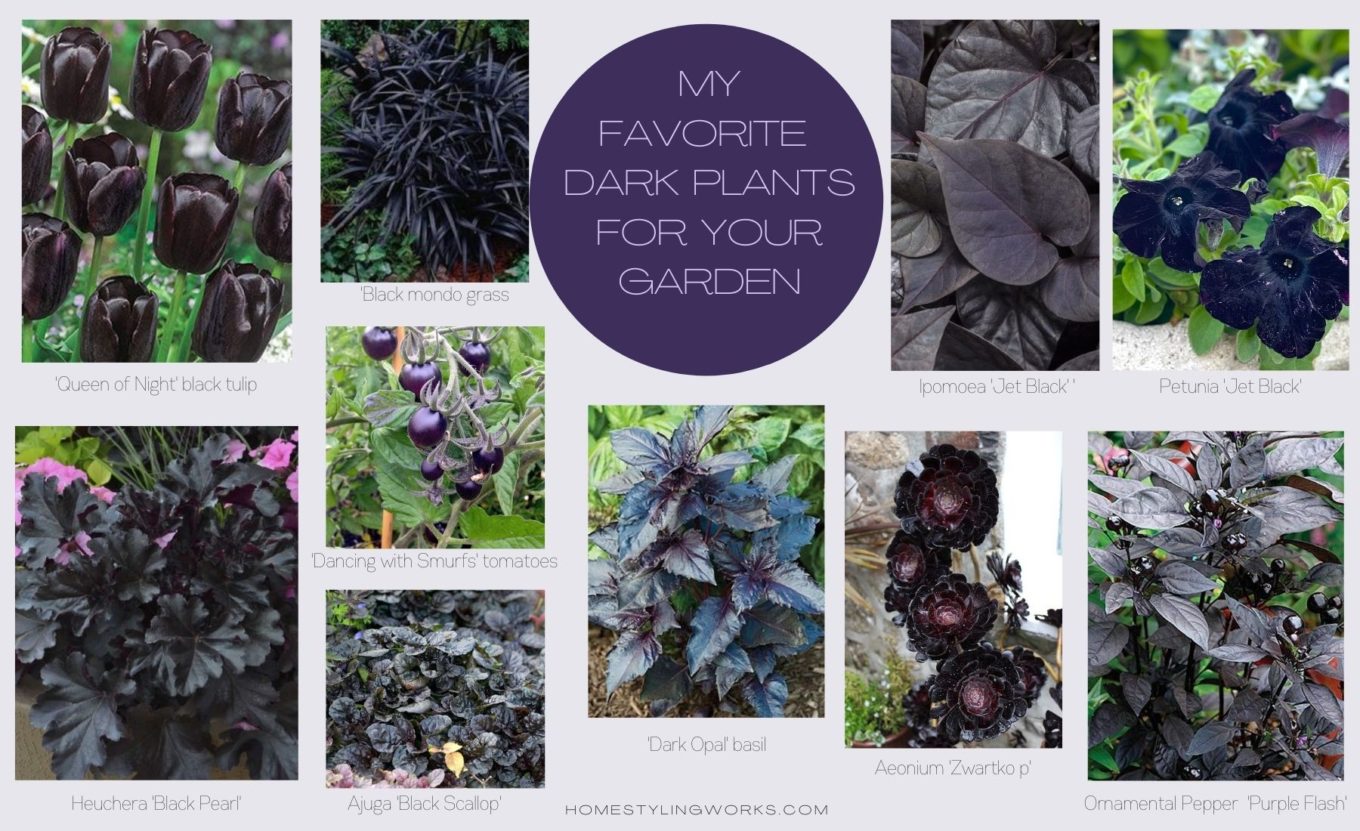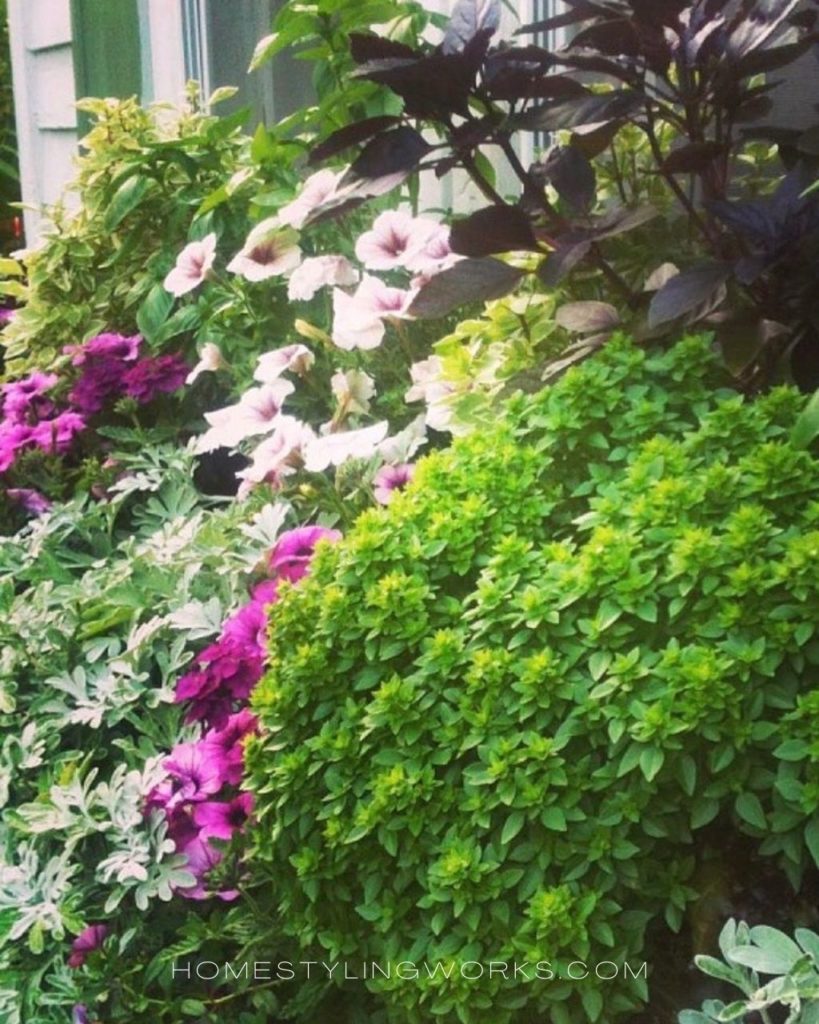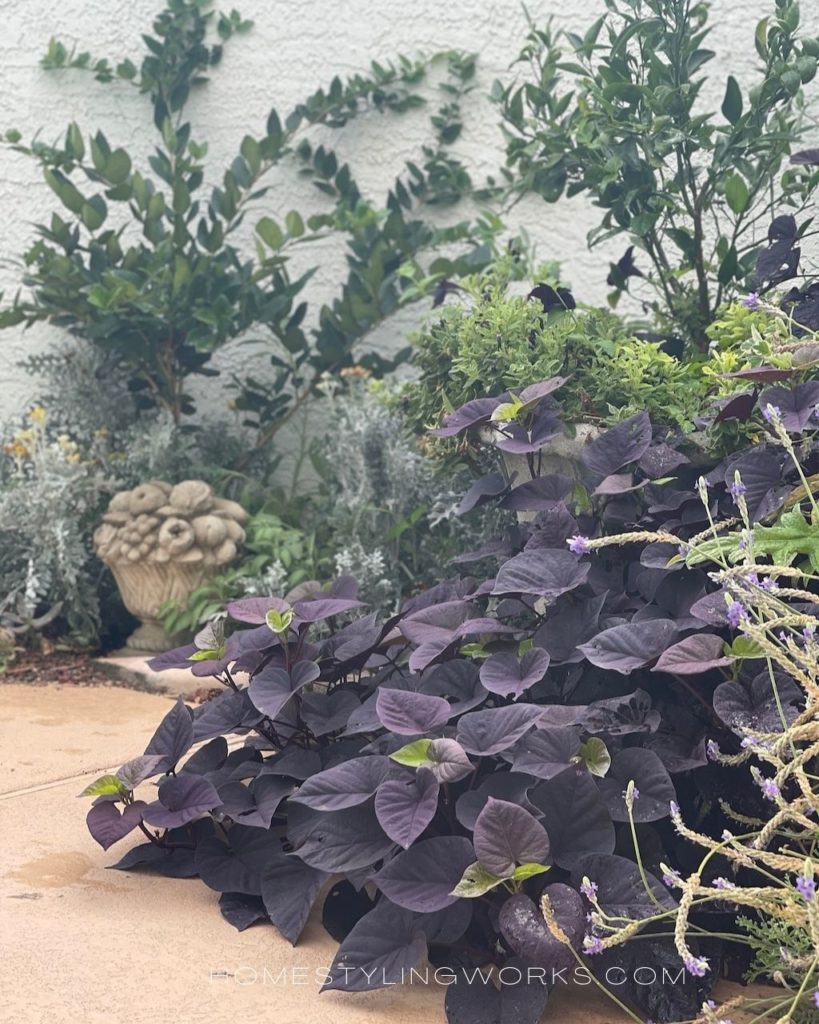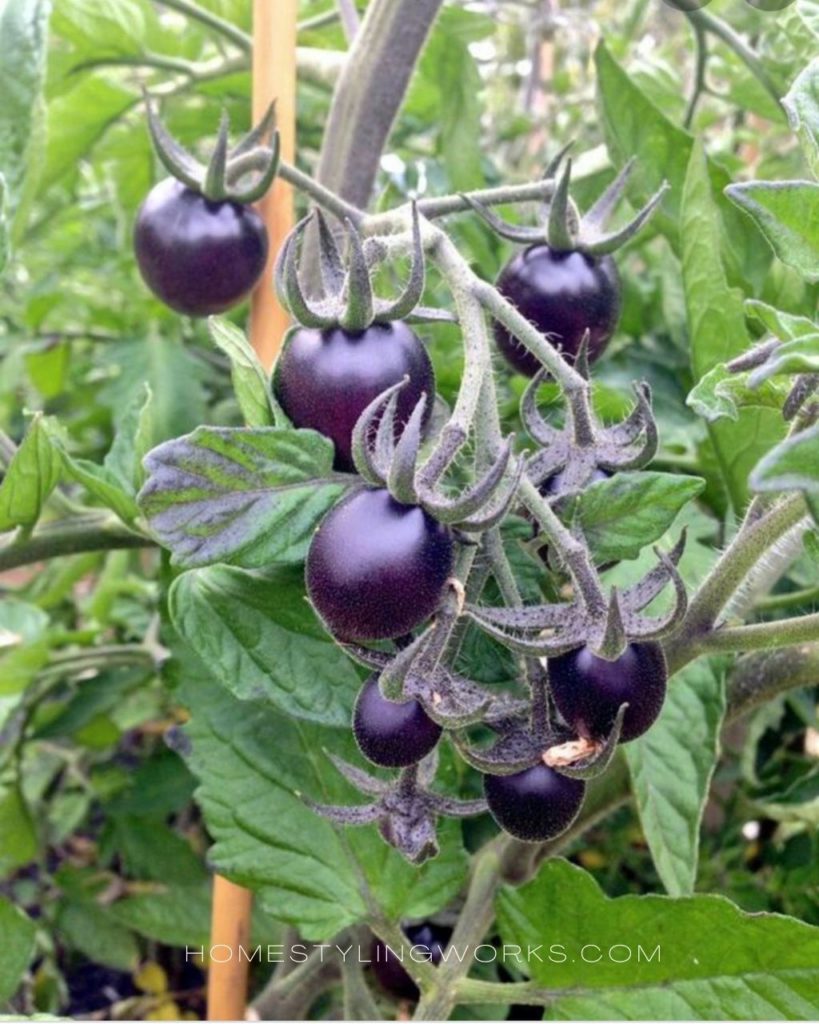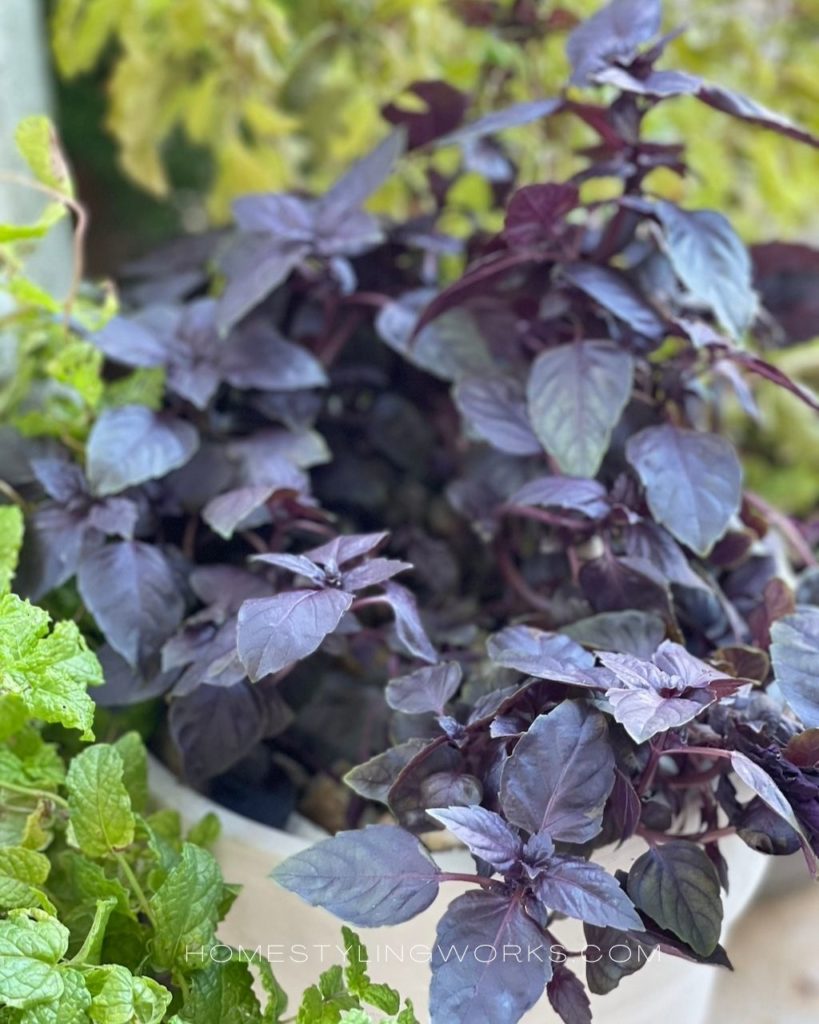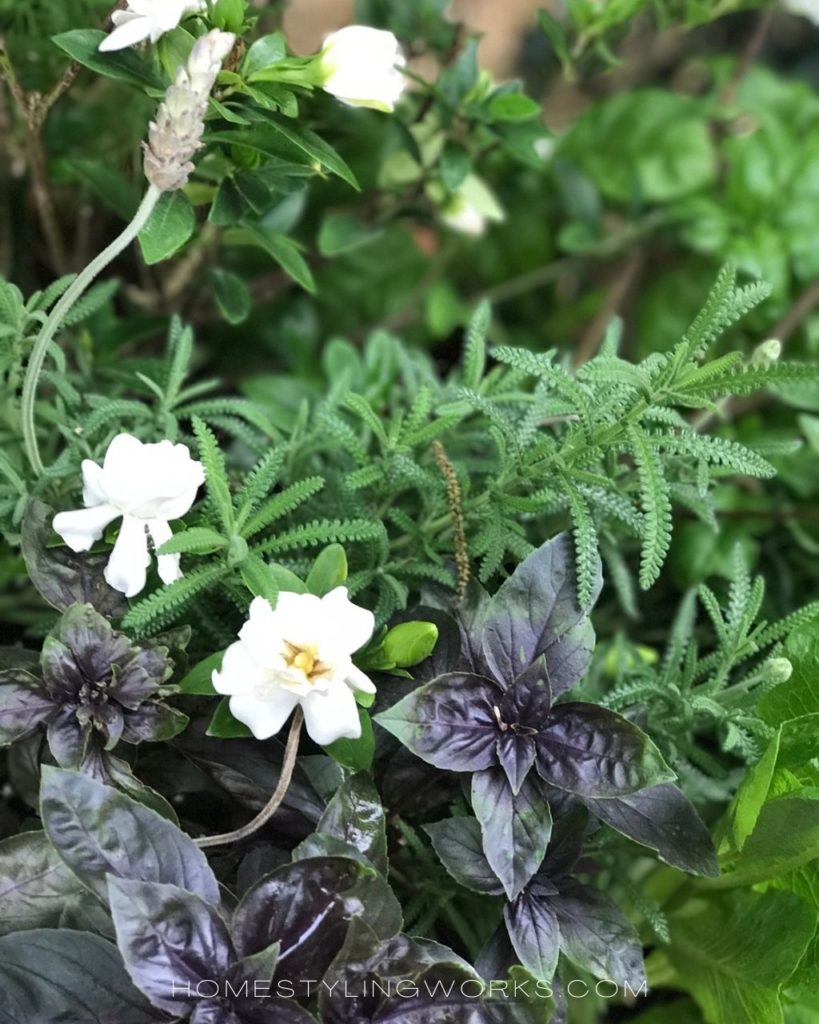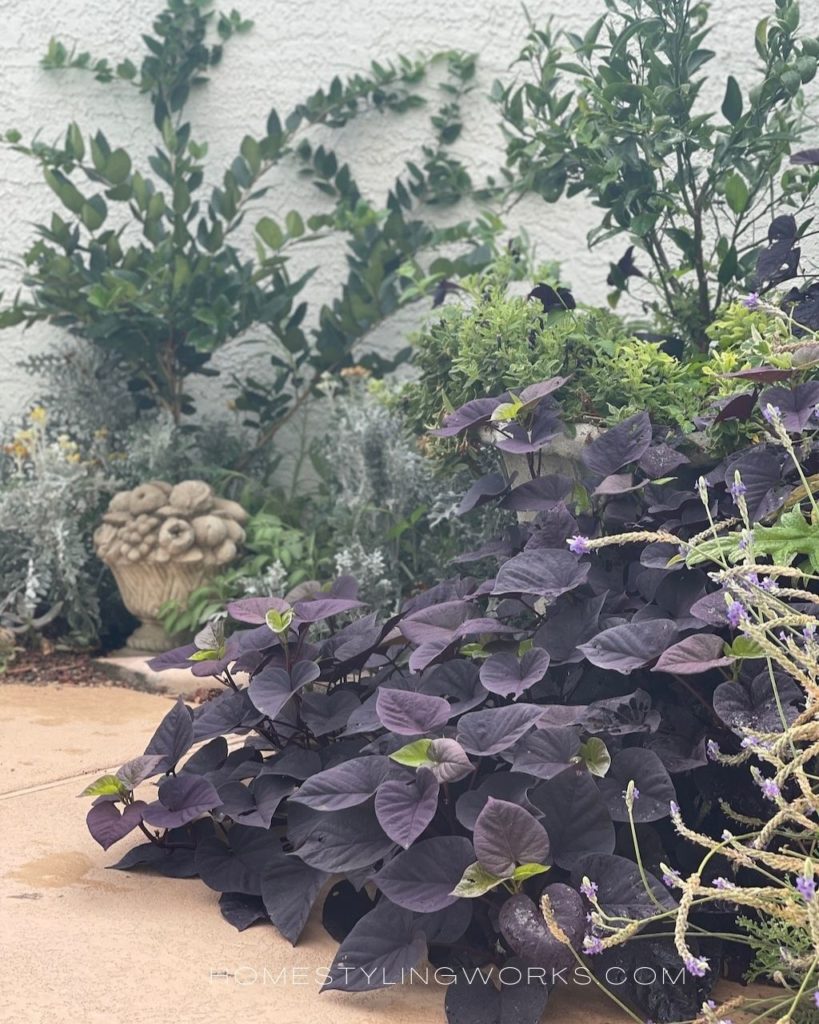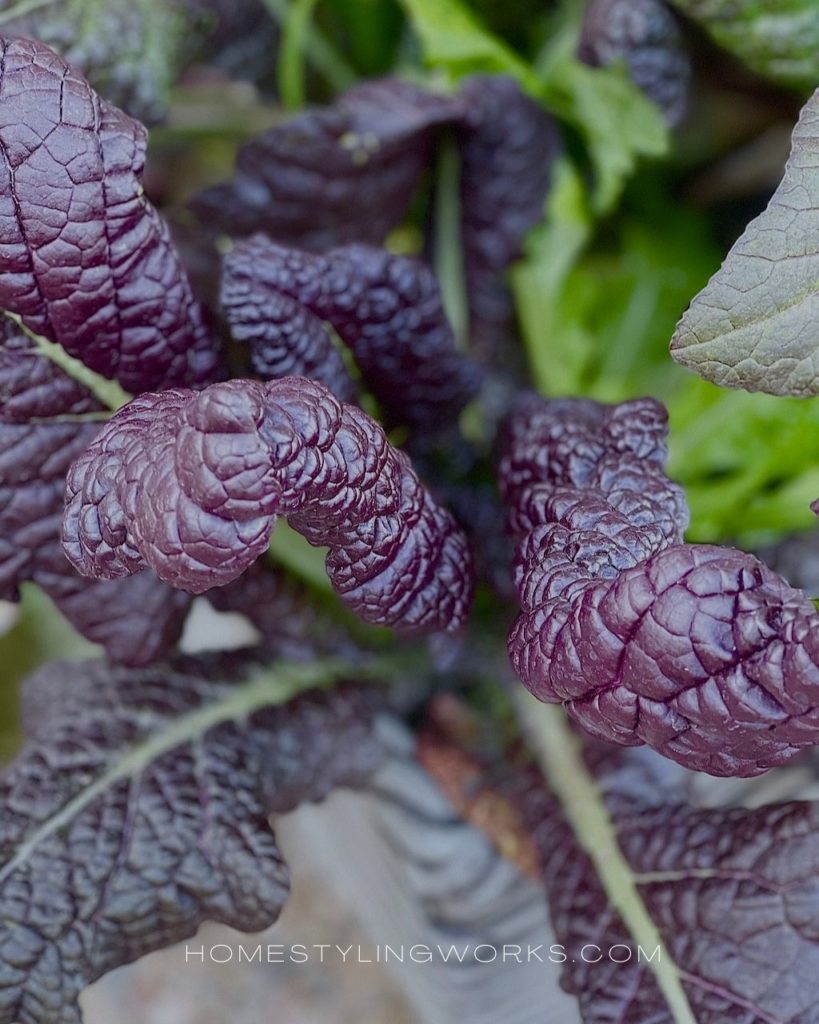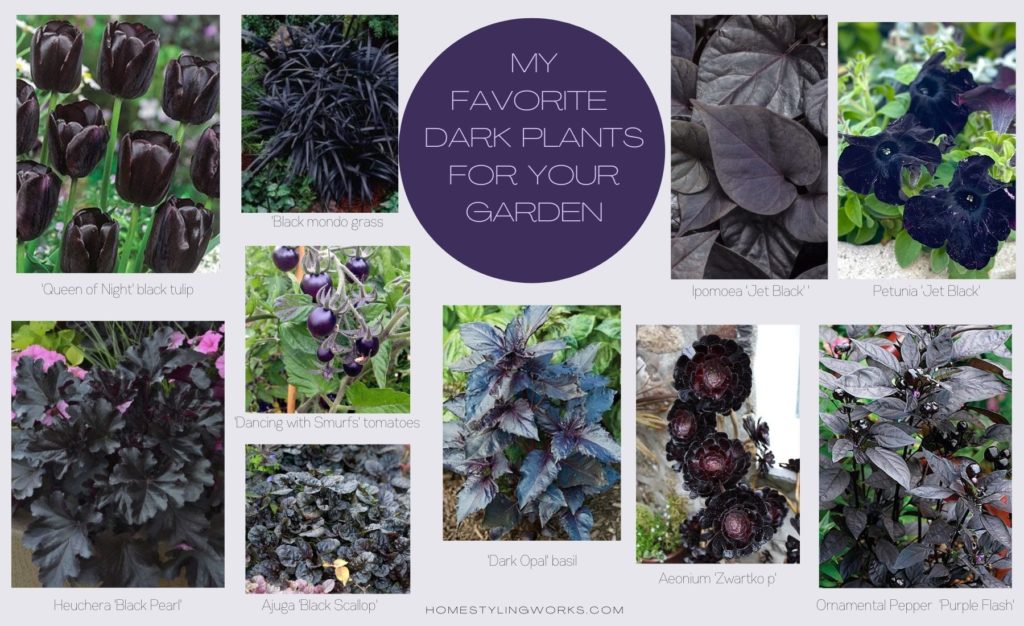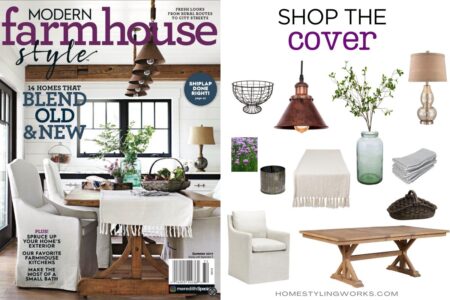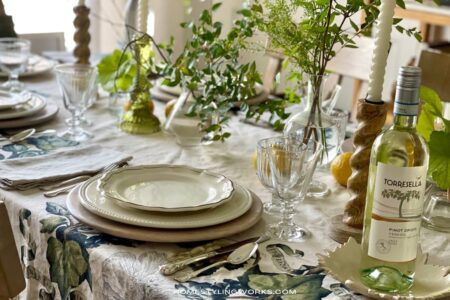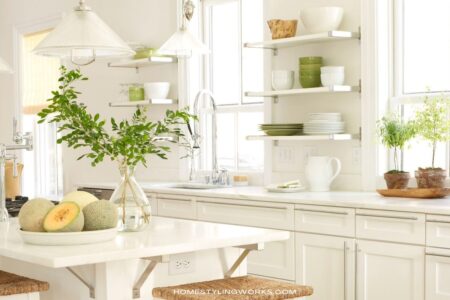Today I’m talking about adding dark plants to your garden – both in containers and in your landscape. Think of it this way: if gray and silver plants are the quiet, girl-next-door plants in the garden, dark plants are the alluring siren. You can have both, too!
Most gardens conjure up images of romantic, flowery, idyllic, soft, billowy, charming and other synonyms for “pretty”. In fact, you can’t get more romantic than lush roses and peonies. Below are a couple of images of my garden in Saratoga Springs, NY, which were photographed for Better Homes & Gardens Cottage Style and Country Gardens magazine. As you can see, there’s a profusion of flowers and a decidedly “romantic” feel to the terrace garden (left) and window box garden (right).
But I think you can overload on just pretty. Can a garden be a little, well, sexy? Meaning: mysterious, intriguing, unexpected, alluring. I think so – and here’s how.
I have a secret to adding a little mystery and sex appeal to your garden – you add a few DARK PLANTS. Meaning, foliage and flowers in deep, rich shades of aubergine, black-purple, and even inky-black. In this post, I’m going to share with you my favorite dark and sexy garden plants, and how I came to embrace “the dark side” of gardening.
MY DARK PLANT DISCOVERY
When I first began gardening many years ago, I was all about the English cottage garden. In my first few gardens, I grew rambling roses, romantic foxgloves and delphiniums – all in shades of pink, blush and purple. As my gardening journey evolved over the years, I realized that these types of flower gardens are a lot of work. I mean, a LOT of work. Beautiful, but high maintenance. Delphiniums that needed staking, constant deadheading, plus a few insect-y critters that came to love my David Austin roses.
When my husband and I bought our home out west two years ago, I wanted our small garden to feel more “West Coast Santa Barbara meets Mediterranean” than “flower-filled English landscape”.
For our new landscape, I was drawn to plants in rich, dark hues to offset the creamy-white color of our home’s exterior – and add a little garden sex appeal in the process.
DARK HUES + LIGHT
One thing I noticed when I started researching dark plants was that they come in a wide range of colors – from jet-black to blue-black to blue-purple to purple-black. I also noticed that the colors change according to the amount of light the plants receive and the time of day.
In full-blasted, bright sun, the dark plants get a little washed out. They look better in light shade, where the complementary plants can pop. Think of the dark plants as a “canvas”, and the surrounding plants as the “brush strokes”.
DARK PLANTS IN THE GARDEN
Here are a few examples of how I incorporated dark plants into my current garden.
SUCCULENTS IN POTS
I grow my favorite dark succulents in planters, which allows me to move them around (and indoors during the winter). Below left is my favorite Aeonium ‘Zwartkopf’, which is worth seeking out for its lovely rosette shape. Below right is Echeveria ‘Black Knight’, which is very happy on a sunny spot on my garden table and it’s even starting to flower.
GROWING TIP: Succulents should be planted with other succulents (or on their own), as their watering requirements are very specific. You don’t want to put a thirstier plant like petunias or basil with succulents.
DARK EDIBLE PLANTS
Last year on a trip to Flagstaff, AZ, I spotted the dark cherry tomato variety “Dancing With Smurfs” at a specimen garden, and I started growing them this year in my own garden (below left). My favorite variety of basil is “Dark Opal” (below right), which I grow in a couple of pots in my container garden. This plant is flat-out stunning, especially when juxtaposed with bright green mint and other green herb varieties.
Below left, I also paired “Dark Opal” basil with gray-green lavender and white-flowering gardenia in a pot. Note how the rich purple pops against the other colors. Below right is my kitchen garden featuring purple basil juxtaposed with white-flowering garlic chives.
BLACK-PURPLE FLOWERS
Below is a large planter in my garden that I planted with “Black Velvet” petunias that I found at a nursery in Scottsdale, Arizona. Instead of planting more black plants, which would be overkill, I added trailing variegated plectranthus to enhance the dark flowers. Some other black flower options are chocolate cosmos, black dahlias, black pansies and hollyhocks.
THE EASIEST BLACK PLANT TO GROW
Proven Winners® makes a fabulous, fast-growing sweet potato vine called Sweetheart “Jet Black” (it’s called Sweetheart because of the heart-shaped leaves). This is a fast-growing annual plant and makes a beautiful companion to grey plants (sage, lavender) and plants with light green foliage. Below are a couple of photos from my garden this summer. This is an excellent “gateway” dark plant that I highly recommend for sun to part-sun containers.
DARK PLANTS FOR FALL
Fall is a great time to add a few dark plants to your garden planters or in your garden. Below are dark plants I’m getting read to incorporate into my fall container garden (which look great when accented by white pansies and white pumpkins).
Some ideas for dark fall plants are “Osaka Purple” mustard greens, black mondo grass, purple fountain grass, coral bells (heuchera), purple sage and ornamental cabbage and kale.
Fall is also a great time to plant trees. A couple of beautiful dark specimen trees are Japanese Maple “Burgundy Lace” and “Jet Black”, or Elderberry “Black Lace” (thanks to my fellow gardener and sister-in-law Ann for this recommendation).
MY FAVORITE DARK PLANTS
‘BLACK MAGIC’ PETUNIAS
‘QUEEN OF NIGHT’ BLACK TULIP
AEONIUM ‘ZWARTKOP’
HEUCHERA ‘BLACK PEARL’
IPOMOEA SWEETHEART ‘JET BLACK’
‘BLACK BEARD’ MONDO GRASS
ORNAMENTAL PEPPER ‘PURPLE FLASH’
AJUGA ‘BLACK SCALLOP’
‘DARK OPAL’ BASIL (RUNNER UP: ‘PURPLE RUFFLES’ BASIL)
‘DANCING WITH SMURFS’ TOMATOES
THERE’S A FINE LINE…
There’s always a fine line, isn’t there? Yes, there’s a fine line between dark and sexy and flat-out scary-goth. We want the former, not the latter. In garden design terms, you need complimentary plants to offset the dark plants. It’s all in the mix.
Some favorite examples of how noted landscape designer Scott Shrader incorporated dark plants in his outdoor spaces (both at his own home and in clients’ homes) are in Scott’s recent book called “The Art of Outdoor Living” (it’s also one of my favorite gardening books).
COMPLEMENTARY COLORS
My favorite colors to complement the dark plants are variegated greenery (such as plectranthus and sage), chartreuse (Lady’s mantle, heuchera ‘Lemon Lime’), white and cream, and – probably the best color to offset dark tones are rich shades of purple and lilac. The “sweetness” of the purple tones balances the “sexy” dark tones. The best analogy I can come up with is why you wouldn’t wear a head-to-toe black leather outfit – complete with cleavage, to boot!. Too, too goth. Too, too sexy. You balance one leather piece of clothing (pants or skirt) with a demure, lady-like silk blouse and delicate jewelry. The same goes with plants – it’s all about the balance.
Companion planting is the way to solve the “too goth” issue. Here are three plant combination ideas for combining black/dark plants with complementary colors. You can visit your local nursery for these plants, all of which would look fantastic in outdoor containers. I have a selection of curated planters in the HSW Online Shop here.
PLANT COMBINATION #1: BLACK & CHARTREUSE
Heuchera ‘Black Pearl” + Chartreuse Juniper ‘Lemon Lime’ + Variegated English Ivy + Black Mondo Grass
PLANT COMBINATION #2: BLACK & BURGUNDY
Burgundy Mums + Purple Fountain Grass + Jet Black Sweet Potato Vines
PLANT COMBINATION #3: THE ORANGES OF AUTUMN
‘Sweet Caroline’ Sweet Potato Vine + Carex ‘Prairie Fire’ +’Black Magic’ Petunias
YOUR GARDEN PLANS
Whether you’re looking for interesting plants for container gardens or cool additions to your perennial gardens, I hope this post has inspired you to Make Your Every Day More Beautiful® by adding interesting dark plants to your garden plans.


